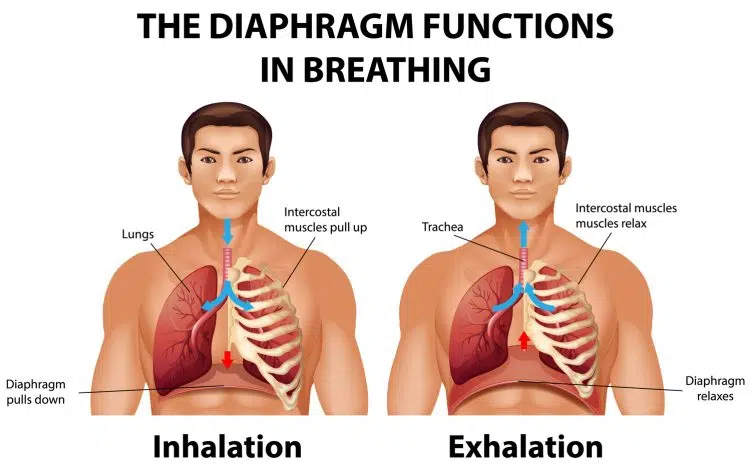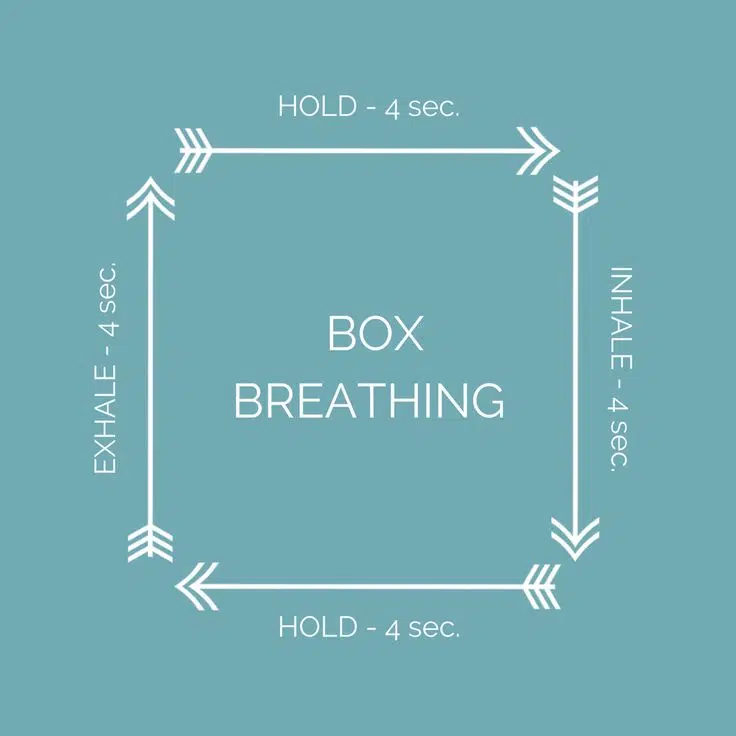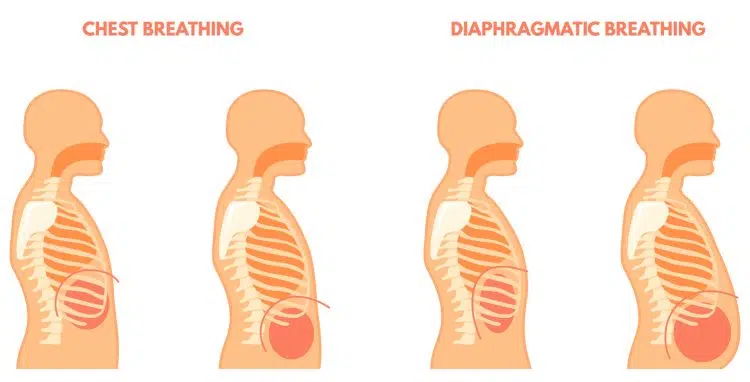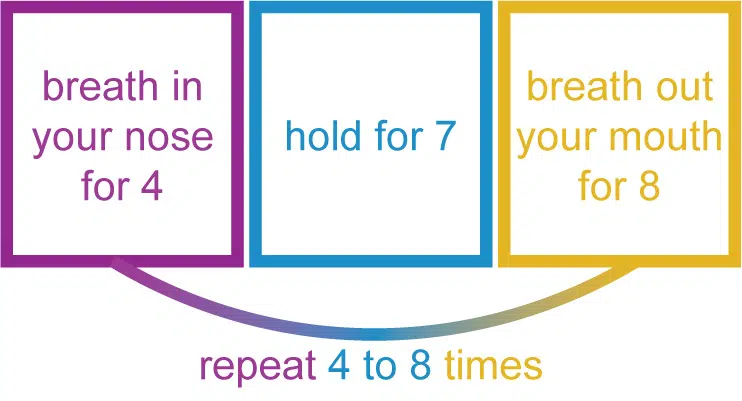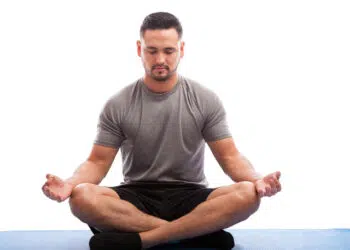Your body must have many different substances to survive and thrive. Food provides energy, while water keeps you hydrated. You also need adequate protein, vitamins, minerals, and fiber.
However, arguably, the most vital thing the human body needs is oxygen (O2). In fact, it’s often said you can survive for four weeks without food and four days without water but only four minutes without oxygen.
Consequently, breathing is something that mostly happens automatically and without our control. That’s good news because, if it didn’t, it would be all too easy to forget to breathe, and going to sleep would be fatal!
Of course, you can choose to hold or control your breathing, which many people do for improved fitness and health. So-called breathwork exercises use voluntary breathing patterns to enhance several aspects of physical and mental performance, including:
- Increased energy
- Improved endurance
- Enhanced recovery
- Increased oxygen saturation
- Reduced stress
- Better sleep quality
- Decreased fatigue
- Enhanced focus and mental clarity
- Strengthened respiratory muscles
- Improved cognition
- Improved cardiovascular health
- Greater mind-body connection
As a former athlete and 30-year veteran personal trainer, I have experimented with numerous breathing techniques to determine which works best.
In this article, I share the four most powerful breathing exercises for better athletic performance.
Level Up Your Fitness: Join our 💪 strong community in Fitness Volt Newsletter. Get daily inspiration, expert-backed workouts, nutrition tips, the latest in strength sports, and the support you need to reach your goals. Subscribe for free!
The Mechanics of Breathing
Most people breathe 12-20 times per minute. However, this can increase to 40 to 60 breaths per minute during intense exercise. Breathing rate rises with your need for oxygen, and the greater the demand, e.g., during exercise, the faster and deeper you breathe.
Breathing is primarily controlled by chemoreceptors in your blood vessels, which monitor how much carbon dioxide (CO2) is circulating around your body. When CO2 levels reach four percent, your body will breathe (or attempt to) even if you are underwater or on the moon. This is an involuntary reaction to oxygen starvation.
Several muscles are responsible for the breathing process. The intercostal muscles lift and expand your rib cage. Simultaneously, your diaphragm, located within your chest cavity below your ribs, pulls downward. These actions open your chest and create a vacuum that pulls oxygen-rich air into your lungs.
On reaching your lungs, the oxygen diffuses into your blood via threadlike veins called capillaries. From there, it travels throughout your body in your red blood cells, which are circulated by your heart.
Once used, oxygen becomes CO2 and travels back to your lungs in the same blood cells. It then diffuses into your lungs for exhalation. Exhalation occurs as your intercostals and diaphragm relax. You can also add force to your exhalation by contracting your rectus abdominis and transverse abdominis muscles, like when you blow up a balloon (1).
While all these processes are automatic, we also have a degree of control over how fast or how deeply we breathe. We can also consciously emphasize different breathing muscles. These voluntary respiratory adjustments are what are commonly known as breathwork.
Now that you understand why and how you breathe, let’s move on to the only four breathing exercises you need for better athletic performance.
Breathing Exercise #1: Wim Hof Method
Wim Hof, a Dutch extreme athlete, credits this breathing method for his ability to withstand extreme temperatures and perform incredible feats of endurance. For example, Hof holds the Guinness World Record for the fastest half marathon run barefoot on ice or snow, with a time of 2 hours, 16 minutes, and 34 seconds.

The reported benefits of the Wim Hof method include (2):
- Enhanced oxygen efficiency
- Improved stress response
- Increased energy levels
- Enhanced recovery
- Strengthened immune system
- Improved mental resilience
- Enhanced focus and concentration
- Increased pain tolerance
- Improved cardiovascular health
- Better cold tolerance
- Reduced inflammation
- Improved mood and reduced anxiety
According to Hof, his breathing method, which he usually pairs with ice baths and other cold therapy methods, also enhances immunity and could even prevent or treat cancer. However, while there are numerous proven benefits to the Wim Hof method, the cancer-fighting claims are yet to be substantiated.
Related: The Ice Bath Ultimate Guide — Should You Take the Plunge?
How to Do the Wim Hof Method
Try the Wim Hof method for yourself by following these steps:
- Sit or lie down in a comfortable position.
- Breathing through your nose or mouth, inhale deeply and exhale fully 30-40 times in a steady, rhythmic manner.
- Next, exhale fully and hold your breath for as long as comfortable – typically 1-2 minutes.
- Inhale deeply, filling the lungs to capacity, and hold your breath for another 10-15 seconds. Then release and return to normal breathing.
Use the Wim Hof method to maximize energy levels and endurance before intense training or athletic events. Alternatively, use it to enhance cognition, e.g., before an exam or to boost creativity.
Breathing Exercise #2: Box Breathing
Box breathing, also known as tactical breathing, is a breathwork technique Navy SEALs use during periods of intense physical and emotional stress. As you can imagine, giving in to stress or fatigue can be the difference between life and death during a combat mission, which is why this technique is so valuable.
The great thing about box breathing is that you can do it during almost any activity. As such, you can use it as needed – even partway through a workout. Box breathing is also simple, easy to learn, and equally easy to remember. Like most things related to the Navy SEALs, box breathing delivers excellent results without a whole lot of muss or fuss.
The research-backed benefits of box breathing include (3):
- Reduced stress
- Lower heart rate
- Increased energy
- More stable emotions
- Improved cognitive function
- Lower perceived fatigue
- Faster recovery
- Better sleep
Related: How Stress Hurts Your Gains and What to Do About It
Level Up Your Fitness: Join our 💪 strong community in Fitness Volt Newsletter. Get daily inspiration, expert-backed workouts, nutrition tips, the latest in strength sports, and the support you need to reach your goals. Subscribe for free!
How to Do Box Breathing
- Inhale for four seconds.
- Hold your breath for four seconds.
- Exhale for four seconds.
- Hold your breath for four seconds.
- Continue for several minutes.
It’s usually best to learn and practice box breathing in a comfortable position, e.g., while sitting in a chair. However, once mastered, use this technique in progressively more demanding situations so you can call on it when needed.
Perform box breathing to calm your nerves before or during a stressful event, to help focus your mind, boost your energy, or promote recovery.
Breathing Exercise #3: Diaphragmatic Breathing
Everyone knows how to breathe, right? After all, if you ever forget, your body will quickly take over and keep your body supplied with the oxygen it needs to survive. However, despite this, many people do not breathe properly, relying more on their chest muscles than their diaphragms to draw air into their lungs.
Why?
That’s hard to say, but I suspect that part of the problem is that diaphragmatic breathing makes your abdomen bulge outward. Most people are taught from an early age to suck their guts in if they want to look their best!
Chest breathing is often associated with high stress levels. It may also reduce your ability to take in a maximal volume of oxygen. In short, chest breathing increases fatigue and reduces cardiorespiratory efficiency.
Learning (or relearning) to use your diaphragm as your primary breathing muscle offers several research-backed benefits, including (4):
- Reduced stress and cortisol levels
- Deeper, more efficient breaths
- Increased oxygen saturation
- Faster recovery
- Enhanced sleep
- Improved quality of life
How to Do Diaphragmatic Breathing
- Sit or lie in a comfortable position.
- Place one hand on your chest and the other on your abdomen.
- Inhale deeply through your nose, allowing your abdomen to expand while keeping your chest relatively still.
- Exhale slowly through your mouth, feeling your abdomen fall while keeping your chest still.
- Repeat this process for 5-10 minutes, maintaining a steady, rhythmic breathing pattern.
Perform diaphragmatic breathing before intense workouts or events, whenever you feel stressed or tired, to enhance recovery after exercise, or to help you relax before sleep.
Breathing Exercise #4: 4-7-8 Breathing
Sleep is the unsung hero of improved athletic performance. Whatever intense training takes out of your body, a good night’s sleep puts back in. Not getting enough sleep will impair your recovery, undermining your progress and results.
Frustratingly, though, getting enough sleep is not always easy. Despite wanting to sleep longer and deeper, many people find it hard to fall asleep. Otherwise, they wake up before they’re fully rested.
You can do plenty of things to enhance your sleep, such as avoiding caffeine before bedtime, cooling/darkening your bedroom, using a white noise generator, and using natural sleep aids. However, another proven method is the 4-7-8 breathing technique.
Like all other breathwork exercises, 4-7-8 breathing involves inhaling and exhaling to a set rhythm. However, despite its simplicity, users of this method report that they fall asleep faster and sleep for longer, and such claims are supported by research (5).
4-7-8 breathing offers several additional benefits:
- Lower blood pressure
- Less stress
- Increased insulin sensitivity
- Lower resting heart rate
- More energy on waking
How to Do 4-7-8 Breathing
- Sit or lie in a comfortable position.
- Inhale through your nose for a slow count of four.
- Hold your breath for a slow count of seven.
- Exhale slowly through your mouth for a slow count of eight.
- Repeat 4-8 times or until you feel relaxed and drowsy.
Use 4-7-8 breathing to help you sleep or anytime you feel stressed and need to relax. However, this is not a good technique to use before sports or exercise, as feeling sleepy probably won’t do much for your performance!
Related: The Importance of Sleep for Building Muscle and Losing Fat
Closing Thoughts
It’s easy to take breathing for granted. After all, it’s something that you can do in your sleep. However, there is a lot of research supporting breathwork and breathing exercises, both for improved athletic performance and better health.
Breathwork is a trending topic, but it’s actually been around for centuries. It’s a part of various traditional disciplines, including:
- Yoga
- Tai chi
- Sufism
- Buddhist meditation
- Qigong
While I don’t believe that you have to obsess over your breathing rhythm and depth, I do think that, at certain times, taking more control over your breathing can be very beneficial. It’s especially useful before and during intense exercise, when you feel stressed, and if you have trouble sleeping.
You don’t even have to learn dozens of different breathing exercises – four are all you need!
What is your opinion of breathwork and breathing exercises? Share your thoughts in the comments section below.
References:
- De Troyer A, Boriek AM. Mechanics of the respiratory muscles. Compr Physiol. 2011 Jul;1(3):1273-300. doi: 10.1002/cphy.c100009. PMID: 23733642.
- Almahayni O, Hammond L. Does the Wim Hof Method have a beneficial impact on physiological and psychological outcomes in healthy and non-healthy participants? A systematic review. PLoS One. 2024 Mar 13;19(3):e0286933. doi: 10.1371/journal.pone.0286933. PMID: 38478473; PMCID: PMC10936795.
- Balban MY, Neri E, Kogon MM, Weed L, Nouriani B, Jo B, Holl G, Zeitzer JM, Spiegel D, Huberman AD. Brief structured respiration practices enhance mood and reduce physiological arousal. Cell Rep Med. 2023 Jan 17;4(1):100895. doi: 10.1016/j.xcrm.2022.100895. Epub 2023 Jan 10. PMID: 36630953; PMCID: PMC9873947.
- Hopper SI, Murray SL, Ferrara LR, Singleton JK. Effectiveness of diaphragmatic breathing for reducing physiological and psychological stress in adults: a quantitative systematic review. JBI Database System Rev Implement Rep. 2019 Sep;17(9):1855-1876. doi: 10.11124/JBISRIR-2017-003848. PMID: 31436595.
- Vierra J, Boonla O, Prasertsri P. Effects of sleep deprivation and 4-7-8 breathing control on heart rate variability, blood pressure, blood glucose, and endothelial function in healthy young adults. Physiol Rep. 2022 Jul;10(13):e15389. doi: 10.14814/phy2.15389. PMID: 35822447; PMCID: PMC9277512.

